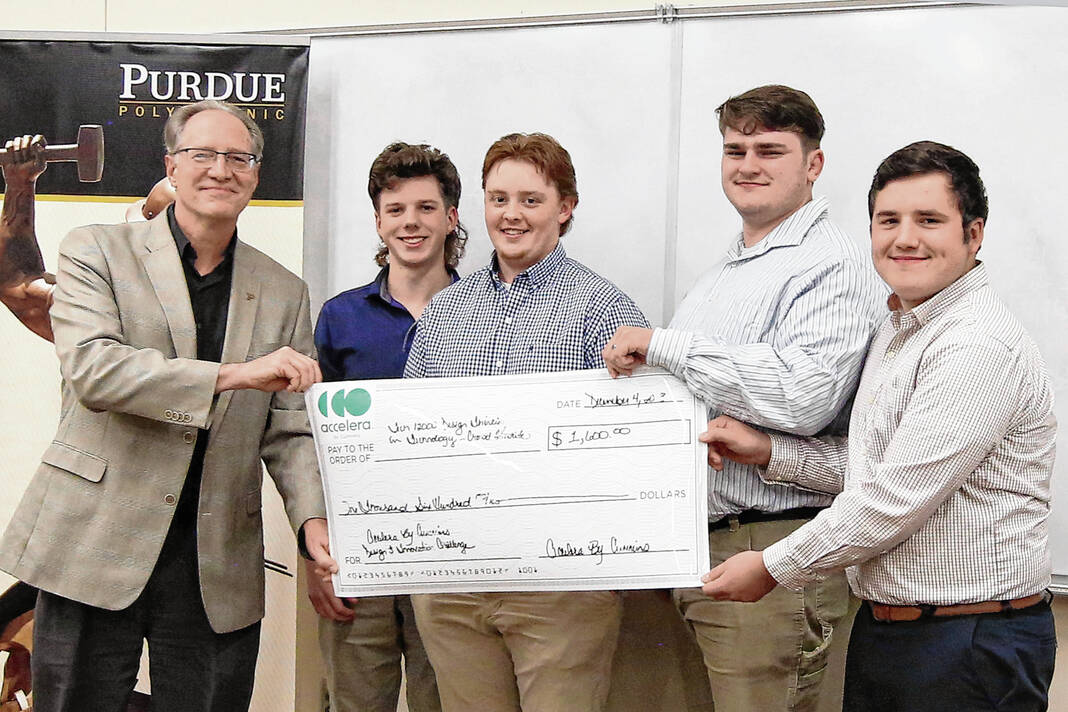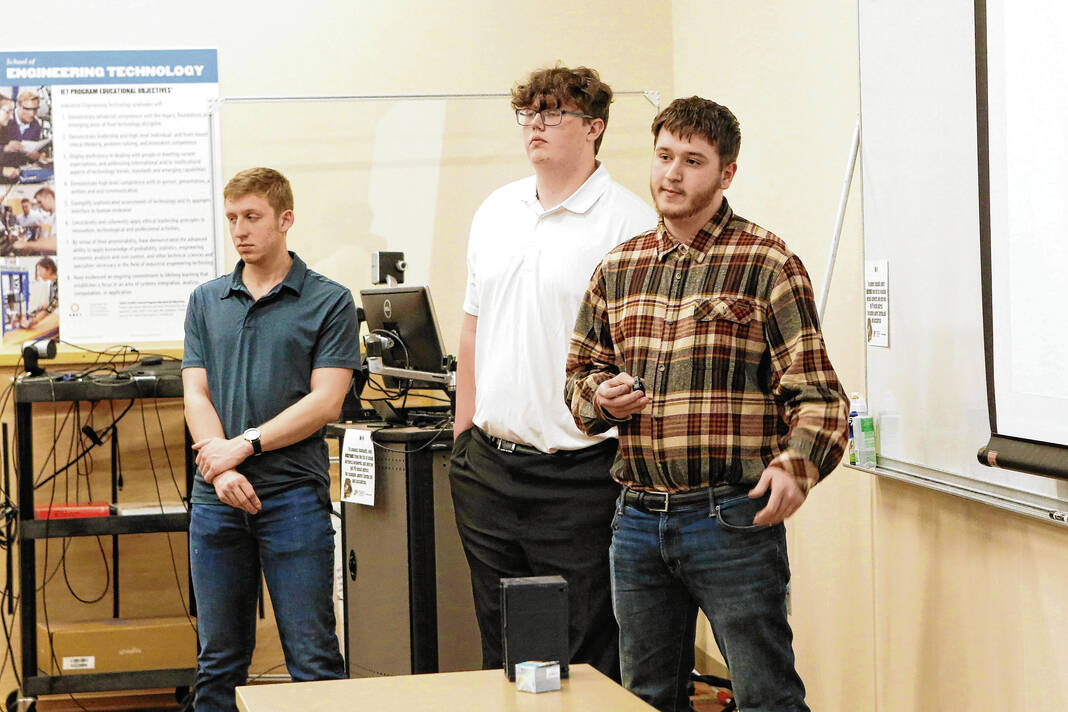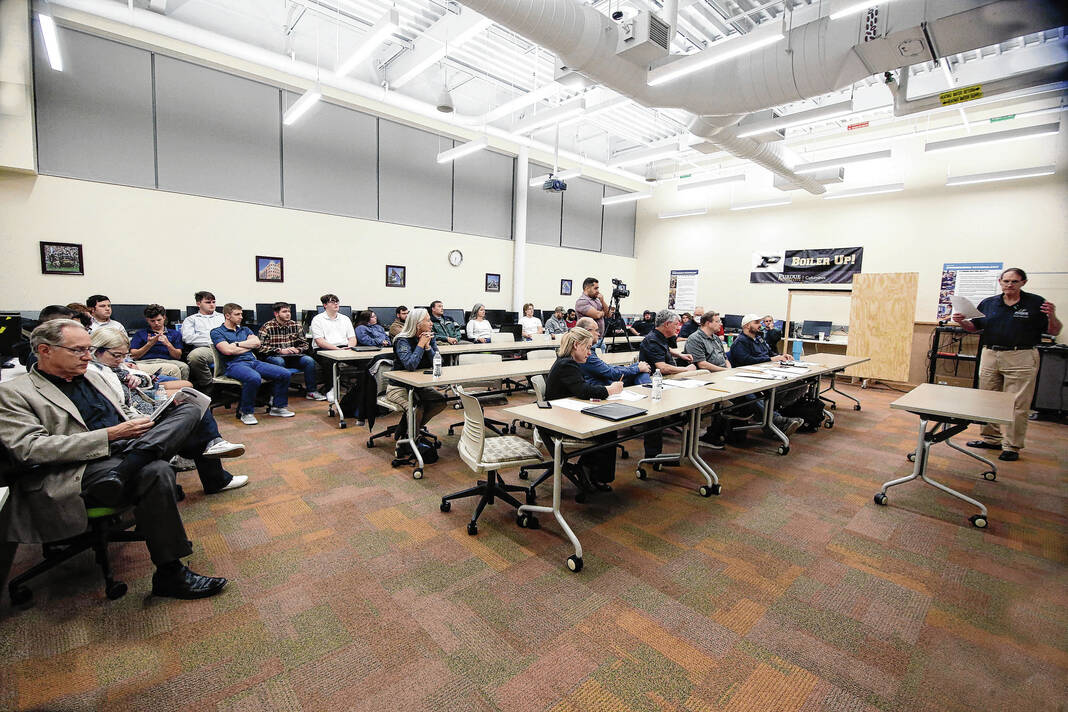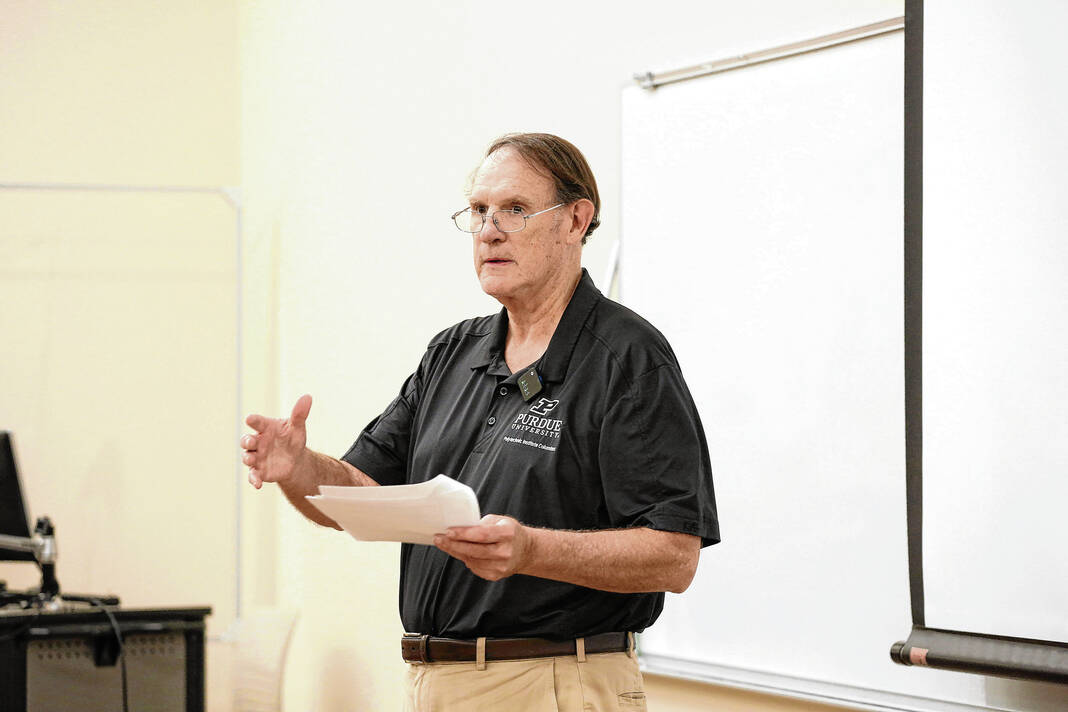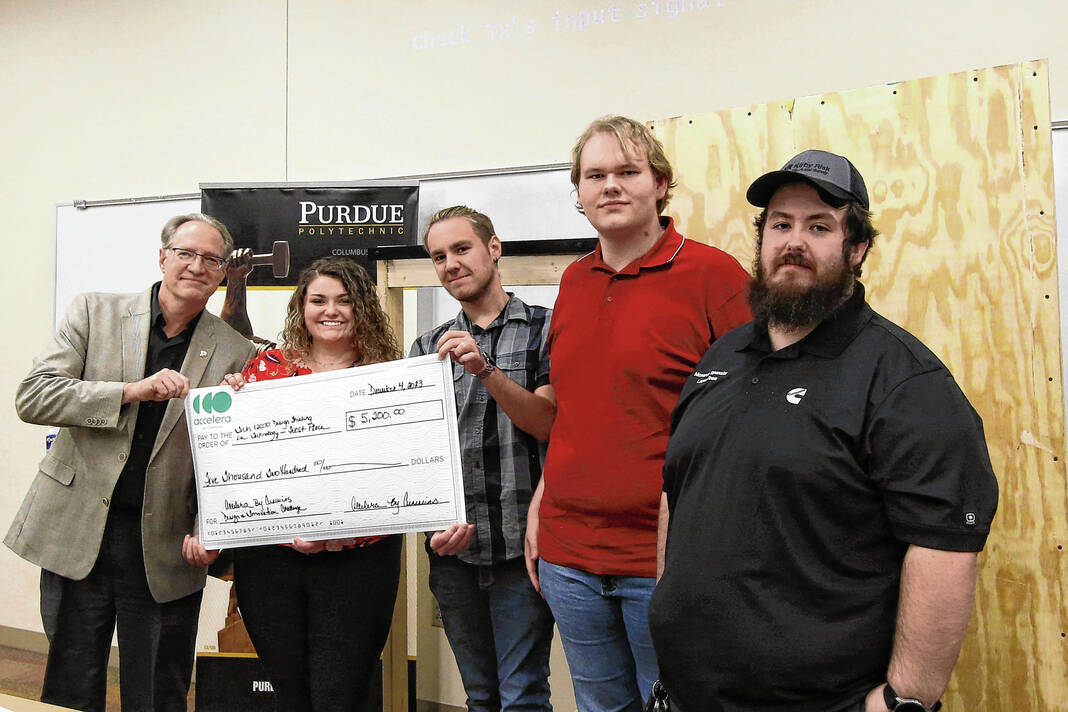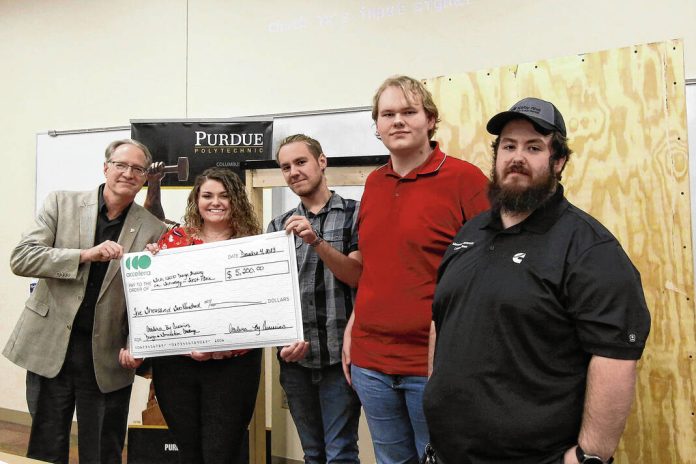
Carla Clark | For The Republic John Heichelbech, at left, presents the First Prize Scholarship check to Alexis Striecker, Luca Young, Zackary Dickman and Ryan O’Neal for their School Safety project during the Accelera by Cummins Design and Innovation Challenge, featuring students from the Purdue University Polytechnic Institute of Columbus, held at Advanced Manufacturing Center of Excellence, Columbus, Ind., Monday, December 4, 2023.
Students from the Purdue Polytechnic Columbus Campus participated in the first-ever Accelera by Cummins Design and Innovation Challenge at the Advanced Manufacturing Center of Excellence on Monday.
“This grand event marked the pinnacle of achievement for the students enrolled in TECH 12000 (Design Thinking in Technology), a cornerstone course that serves as the academic lodestar for all programs offered at the esteemed Purdue Polytechnic Columbus Campus,” said Nancy Lollar, director of the local campus.
During the semester, five student groups have developed different projects, which were presented at the event and considered for awards.
Cummins, Inc, sponsor for the event, provided $10,000 in scholarships — $5,200 for first place, $3,200 for second place and $1,600 for crowd favorite. The winners were as follows:
First Place: “School Safety” by Zackary Dickman, Ryan O’Neal, Alexis Striecker and Luca Young.
Second Place and Crowd Favorite: “Silent Fishing Boat Motor” by John Beck, Brody Kirkland, Asher Lamb and Patrick McMahon.
According to Lollar, the first place project aims to enhance school safety by “creating an effective and user-friendly door protection system.”
“The team’s first prototype, developed in a collaborative effort, featured a 5’x6’ rectangular frame with a sliding door mechanism, aiming to test the feasibility of sealing and securing existing doors in emergency situations,” she said.
The second place project focused on addressing the environmental impact and disturbances caused by standard boat motors, as well as the need for a better method of propulsion.
“Their proposed solution involves the development of a prototype for a small fishing boat that is 100% electric-powered, producing zero prop wash and emissions,” Lollar said.
She stated in a previous interview that the scholarships will be distributed evenly between winning students.
William Bewley, limited term lecturer with Purdue Polytechnic Statewide, said that students worked to address “open-ended, local problems with global significance” and were able to receive valuable insight from the panel of judges.
“They offered their time to not only judge but to share their reactions, strengths and missed opportunities for each design,” he said. “This feedback allows our students to understand how to engage in a robust design process and pitch that to a group of evaluators who might potentially fund the idea.”


